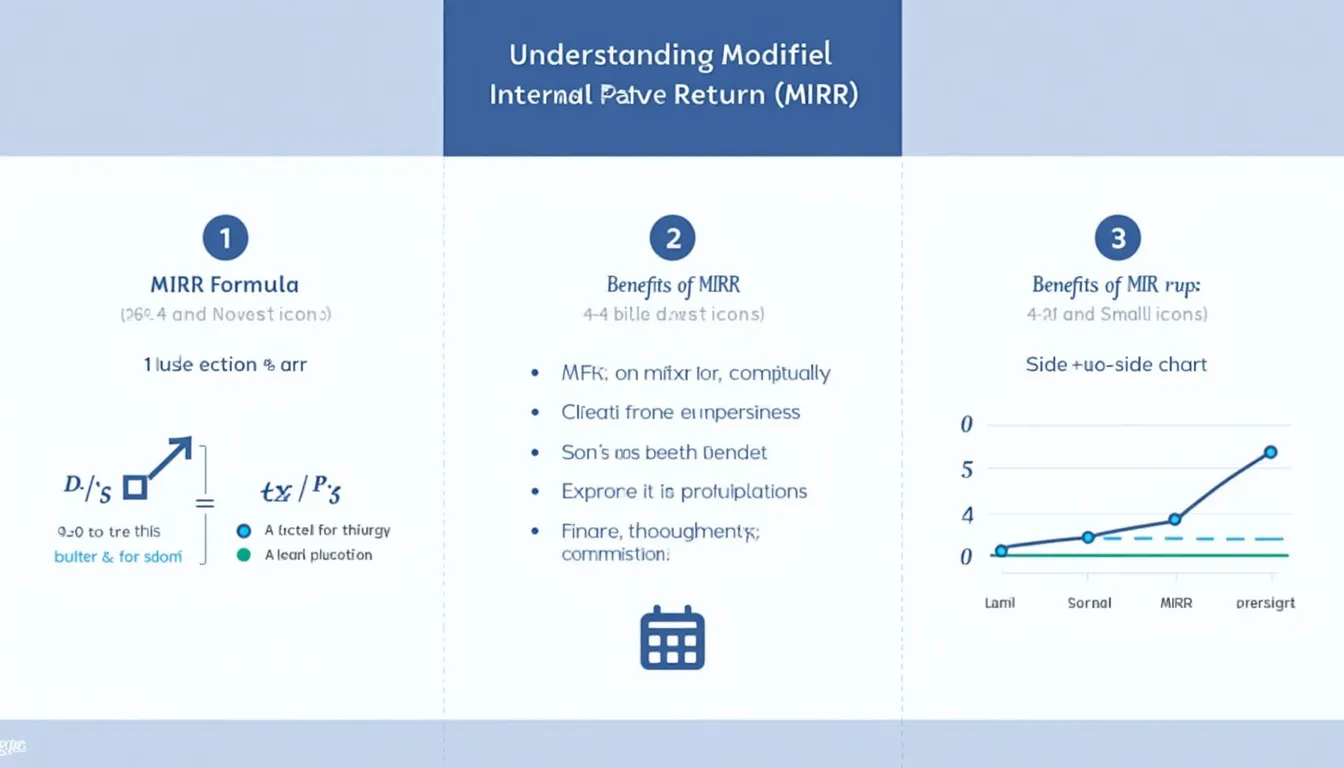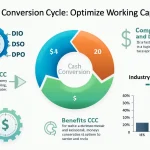Modified Internal Rate of Return Calculator
Is this tool helpful?
How to use the tool
- Ending Cash Flow – type the project’s last cash inflow, e.g., 12 500 or 18 000.
- Initial Cash Flow – enter the upfront outlay, e.g., 4 500 or 9 200.
- Number of Periods – add the total years, e.g., 3 or 7.
- Press “Calculate” to view the annualised Modified Internal Rate of Return.
Formula
$$ MIRR = \left( rac{\text{Ending Cash Flow}}{\text{Initial Cash Flow}}\right)^{ rac{1}{n}} – 1 $$ Multiply by 100 to display a percentage.
Example 1
- Ending Cash Flow = 15 000
- Initial Cash Flow = 5 000
- Periods = 4
- $$MIRR = (15 000/5 000)^{ rac14}-1 = 0.3161 \times 100 = \mathbf{31.61\%}$$
Example 2
- Ending Cash Flow = 11 000
- Initial Cash Flow = 8 000
- Periods = 3
- $$MIRR = (11 000/8 000)^{ rac13}-1 = 0.1121 \times 100 = \mathbf{11.21\%}$$
Quick-Facts
- MIRR assumes reinvestment at the cost of capital, not at IRR (Investopedia, 2023).
- Corporate cost-of-capital averages 8.6 % in the U.S. (Damodaran, 2023).
- Excel’s MIRR function syntax: MIRR(values, finance_rate, reinvest_rate) (Microsoft Docs, 2023).
- “MIRR eliminates the multiple-IRR problem and provides a unique solution” (CFI, 2023).
FAQ
What is MIRR?
MIRR is an annualised return metric that discounts outflows at the finance rate and compounds inflows at the reinvestment rate, producing one unambiguous rate (Investopedia, 2023).
How does MIRR differ from IRR?
IRR assumes reinvestment at its own rate, whereas MIRR uses a realistic cost of capital, removing multiple-solution issues (CFI, 2023).
Which inputs does the calculator need?
You supply only ending cash flow, initial cash flow and the number of periods; the script handles compounding and discounting automatically.
What does a negative MIRR mean?
A negative rate signals the investment fails to recover its cost at the assumed finance rate, indicating value destruction (Corporate Finance Handbook, 2022).
Is a higher MIRR always preferable?
Higher MIRR generally indicates better performance, but compare it with your hurdle rate to confirm it exceeds the project’s risk-adjusted cost of capital (Damodaran, 2023).
Can MIRR process uneven cash flows?
Yes; group all positive flows to future value and all negatives to present value before applying the formula (Koller et al., 2020).
How sensitive is MIRR to the number of periods?
More periods magnify compounding effects; even small cash-flow changes can shift MIRR by several percentage points over long horizons (World Bank PPP Guide, 2022).
Where is MIRR used in practice?
Project finance, private-equity deal screening and capital budgeting teams rely on MIRR because lenders tie covenants to cost-of-capital benchmarks (PwC, 2023).
Important Disclaimer
The calculations, results, and content provided by our tools are not guaranteed to be accurate, complete, or reliable. Users are responsible for verifying and interpreting the results. Our content and tools may contain errors, biases, or inconsistencies. Do not enter personal data, sensitive information, or personally identifiable information in our web forms or tools. Such data entry violates our terms of service and may result in unauthorized disclosure to third parties. We reserve the right to save inputs and outputs from our tools for the purposes of error debugging, bias identification, and performance improvement. External companies providing AI models used in our tools may also save and process data in accordance with their own policies. By using our tools, you consent to this data collection and processing. We reserve the right to limit the usage of our tools based on current usability factors.







